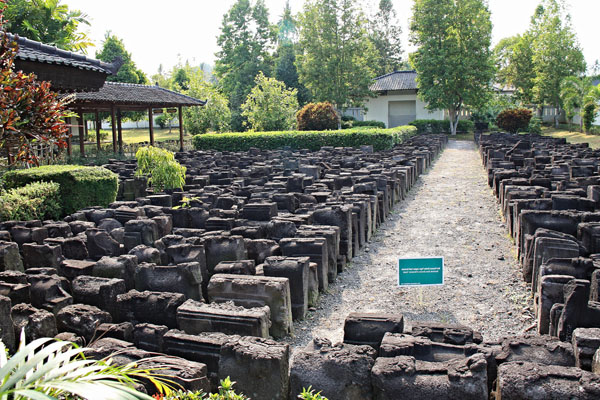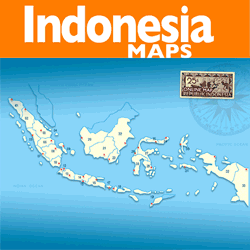Visiting an Archaeology Museum of Indonesia, Karmawhibangga Museum

Karmawhibangga museum inside the Borobudur complex, among other things, you’ll see traditional heritage things of an archaeology that part of Borobudur temple. You’ll see the ancient Borobudur and Buddhist dwellings, Borobudur architectures, Borobudur structure, also the document of restoration project of Borobudur. You can also see the process of Borobudur project during UNESCO’s conversation building. Karmawhibangga is the relief of the Borobudur temple, and it represents the realm of the desire. Karmawhibangga itself tells a story about afterlife (a cause and effect of life) or another known as torture life. On this relief, it is carved that how human’s body was being sawed and cut, burning bodies, and bondage bodies, in another hand, it also tells about good thing that effect a good things. All activities of human being are also written on it relief, or another named as Samsara, the circle of life including birth and die). When people were born, it looks like a sacre baby, still pure, and when people die, they full of lust which all of the lust will be taken a day afterlife in Karmawhibanga. Karmawhibangga, karma means act and whibangga means flow. In another conclusion, everything what we acts, will be get the effect.
The karmawibhangga reliefs at the bas of the temple number only 160 out of the 1460 panels found in borobudur. The relief are located on the lowest level, Kamadhatu. On 35 panels, brief inscription are found above carvings. According to several experts, these are the key to the meaning of karmawibhangga. The episodes on the stone panels are based on the everday life of ancient java in the ninth and tenth centuryies. And it is on these that the ancient way of life is revealed, such as religious behaviour, the social structure, fashion, tools and equipment used and the flora and fauna.
It has been said that ground floor of borobudur was covered because the reliefs depicted pornographic stories, unfit for public consumption. Now it has been proved that at the base of the temple is hidden the story of karmawibhangga. The law of karma, sculpted on stones on made by the people of ancient java for mankind. These reliefs werehidden in the borobudur temple for centuries before they were discovered and unveiled for a short while in order to be studied.
The nuance of the museum
Part of Borobudur temple complex, there are two museums that guard and save antique and historical things of Borobudur.
Approximately 4,000 of the original stones and carvings from the temple are stored in this museum.These include some dissasembled stone blocks, decorative panels, parts of reliefs and structures are stored in the open air field within museum compound. These stone blocks could not be included within Borobudur structure because of missing connecting parts. Borobudur structures are interlocking stone blocks and sometimes replacement new stones are added to replace the missing ones. Some of the important stone blocks displayed here are the chattra, the triple-tiered stone umbrellas served as the pinnacle of Borobudur main stupa. The chattra was reconstructed by Theodoor Van Erp during restoration project between 1907 and 1911. Although the chattra was carefully reconstructed, there was too few remains of the original stone pinnacle. Since the pinnacle design was considered only based upon estimation, Van Erp finally decided to dismantled the chattra pinnacle, now displayed in this museum.
When to go
This museum open from 8 am to 4 pm.

Indonesia’s Heritage Collection: Van Der Wijck Fort -Kebumen
One of the many Dutch heritage forts, Van Der Wijck Fort is unique because the entire building is made of red brick. You’ve seen? This fort with an octagonal plan looks more charming with its red color, compared to Dutch forts which are generally colorless or white. It looks like the fort from the front and inside uses red bricks, but still with the characteristics of a Dutch fort in Indonesia which has a large building structure, such as windows, doors and rooms. With an area of 3606,625 square meters,…
10 Most Unique Tourist Villages in Magelang, Makes You Don’t Want to Go Home
Magelang has a number of temples as the favorite tourist destinations. Besides Borobudur, you can visit several other places, such as tourist villages. There are several tourist villages around Borobudur Temple with a unique and interesting atmosphere. In addition to saving nature, you can also get to know the culture behind it. Temanggung VillageTemanggung Village was viral because it was called Nepal van Java. The view of the village at the foot of Mount Sumbing is really epic. Tanjungsari VillageIf you are interested in the process of making honey, you…
Amazing Tourist Destinations in Jepara, Central Java
Punuk Sapi BeachPunuk Sapi Beach is also popularly known as Pantai Lemah Abang which means “red land beach”. It is named so because this beach is indeed filled with mounds to hills with red soil that at first glance looks like a cow’s hump (punuk sapi is cow’s hump in English). This beach has black sand, but it is also beautiful like the white sand beaches. There are hammocks and swings that you can use to relax, as well as take pictures from a height. This beach is located in…
Arjuna Temple, A Relic of Hindu in the Ancient Mataram Kingdom
Arjuna Temple complex is the most photographed and visited of the surviving temples on the Dieng Plateau. Situated just a few hundred meter from the homestays in Dieng village, they are an obvious first stop on a tour of the sights in the area. Though they are far from the most imposing of Javanese temples, they are the earliest surviving Hindu temples in Central Java, so they are of great importance historically. Built a century or two before the great temples around Yogyakarta and Magelang, they mark the original phase…









